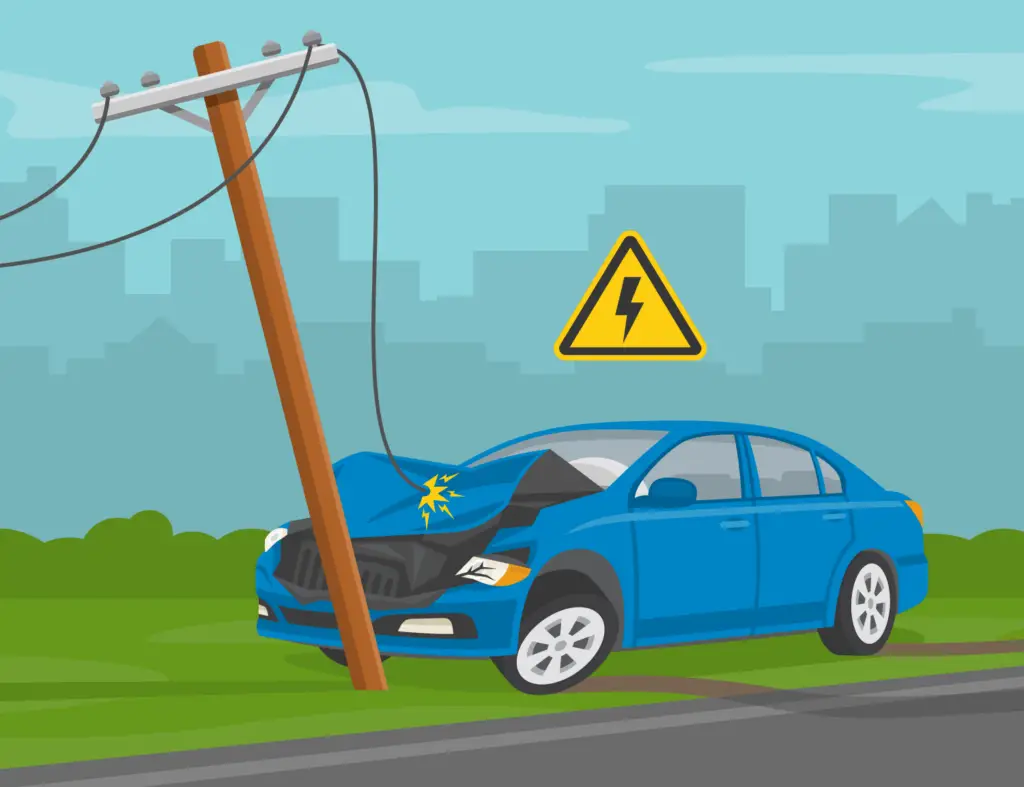Teen drivers should know about electrical road hazards before getting behind the wheel

The only way for young drivers to gain experience is to get behind the wheel and put miles behind them. But sometimes accidents happen. For an inexperienced teen driver, wrecking a car is a terrifying experience.
Some dangers, though, cannot be learned from personal “experience.” Take this example: an accident involving a utility pole. How the driver and passengers handle themselves in those moments after the car comes to a stop may mean the difference between life and death.
“Stay in the car, stay in the car, stay in the car!” is the mantra Indiana Electric Cooperatives wants young drivers to remember.
“When a power line is involved, even a minor accident can become tragic,” said Jon Elkins, vice president of safety, training and compliance at Indiana Electric Cooperatives. “Staying put for all involved and warning others to stay away, too, cannot be stressed enough. You should only get out after a qualified first responder arrives on the scene and says it’s OK.”
Staying put may go against a driver’s first inclination; you want to get out and check the car and see if everyone around is OK.
Teenagers, especially, might worry that “Dad is going to kill me!” But stepping out of the car immediately after striking a utility pole may kill you — for real. Here’s why:
- POWER LINES FALL. When a pole is struck, power lines and hardware can break loose from their insulated perches on the pole.
- FALLEN POWER LINES CAN STILL BE ENERGIZED. Even touching the ground, they can still carry 7,200 volts or more, although they may not spark or buzz.
- POWER LINES ARE NOT INSULATED. Unlike the power cords on appliances we use, overhead power lines are bare strands of metal wire. This means grabbing one, grazing up against one, or touching something that’s touching it can kill you.
- FALLEN POWER LINES ARE HARD TO SEE. They may seem easy to see up on poles, silhouetted against the sky, or glistening in sunlight. But when knocked down and twisted with tall grass or trees as a background, especially at night, they are almost impossible to see.
- ELECTRICITY SEEKS THE QUICKEST PATH TO GROUND. You become that path if you get out of the car and touch a live power line and the ground.
- IF YOU ARE ALIVE, YOU ARE SAFE. Immediately after a collision with a utility pole, you may not know if power lines have broken loose and are on your car. If you are alive, you are not creating that deadly “path to ground.” But fallen power lines might be touching and energizing your vehicle or the ground near you. If so, and you step out onto the ground, the electricity flowing around your car will go through you to the ground.
- CALL 9-1-1. After hitting a pole, call 9-1-1. Tell them you hit a pole. And wait patiently. Tell others to stay back. Wait till you know it’s safe before exiting.